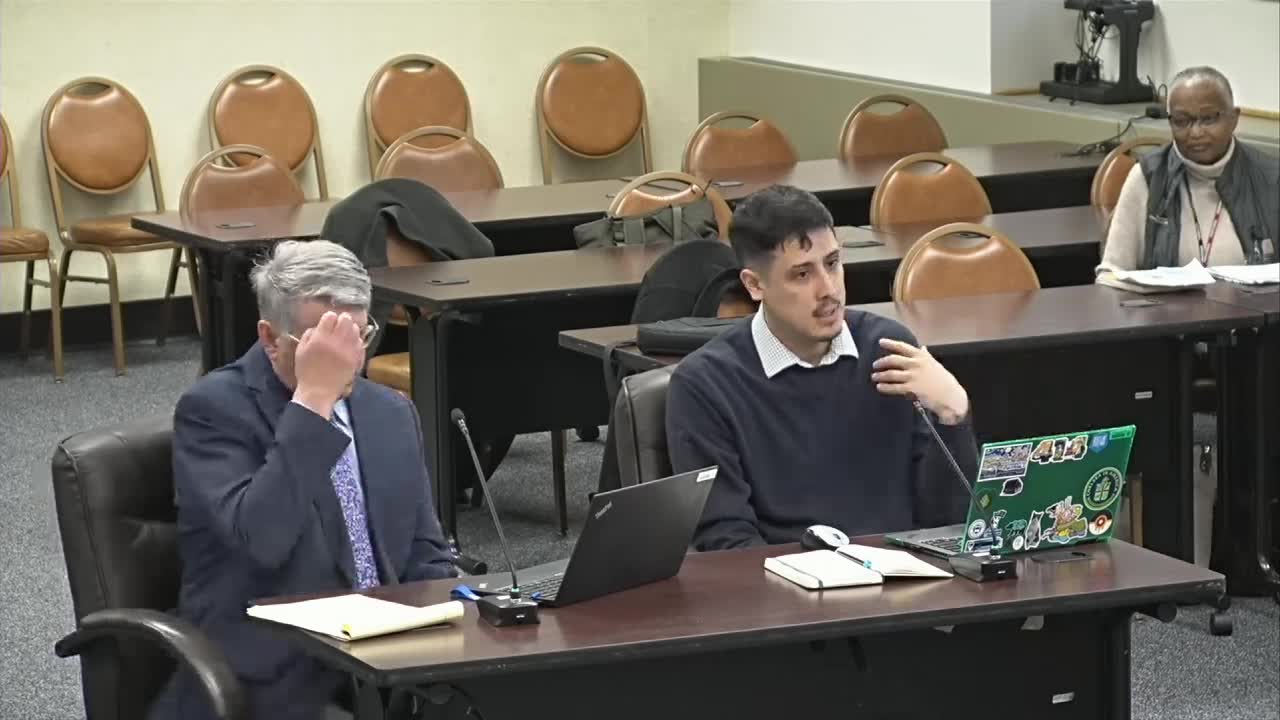ATU advocates for data-informed public transit meetings in Milwaukee
March 05, 2025 | Milwaukee County, Wisconsin
This article was created by AI summarizing key points discussed. AI makes mistakes, so for full details and context, please refer to the video of the full meeting. Please report any errors so we can fix them. Report an error »

In the heart of Milwaukee County, a hybrid meeting of the Committee on Transportation and Transit unfolded, drawing attention to the vital discussions surrounding public transit routes and community engagement. Held in Room 203-R of the Admin Building, the meeting aimed to gather input from residents and stakeholders, ensuring that diverse voices were heard in shaping the future of local transportation.
As committee members convened, the atmosphere buzzed with anticipation. The meeting was designed to accommodate various schedules, allowing residents to weigh in on transit ideas at different times throughout the day. This effort reflects a commitment to inclusivity, ensuring that all community members have the opportunity to participate in discussions that directly affect their daily lives.
One of the key voices in the meeting was Tom Stowicki, representing the Amalgamated Transit Union (ATU). He emphasized the importance of involving operators in the decision-making process, particularly regarding the Operator Service Reports (OSRs). These reports are crucial for identifying inconsistencies in transit schedules and improving service reliability. Stowicki expressed concern over the lack of communication and scheduling difficulties that ATU has faced since last July, highlighting the need for a more collaborative approach.
The committee also addressed the significance of public feedback in shaping transit routes. With over a thousand responses collected from a recent questionnaire, questions arose about how this data would influence decision-making. Stowicki sought clarity on whether majority preferences would dictate route changes or if other factors would also play a role. The response from committee members reassured him that while public opinion is vital, the data would be analyzed with a nuanced approach, considering the perspectives of regular riders and the operational feasibility of proposed changes.
As the meeting progressed, it became clear that the committee is committed to a balanced approach—one that values community input while also considering the practicalities of transit operations. The discussions underscored the ongoing efforts to enhance Milwaukee County's public transportation system, ensuring it meets the needs of its users while remaining efficient and sustainable.
In conclusion, the meeting served as a reminder of the importance of community engagement in shaping public services. As Milwaukee County navigates the complexities of transit planning, the voices of its residents will continue to play a crucial role in determining the future of transportation in the area. The committee's commitment to listening and adapting based on feedback promises a more responsive and effective transit system for all.
As committee members convened, the atmosphere buzzed with anticipation. The meeting was designed to accommodate various schedules, allowing residents to weigh in on transit ideas at different times throughout the day. This effort reflects a commitment to inclusivity, ensuring that all community members have the opportunity to participate in discussions that directly affect their daily lives.
One of the key voices in the meeting was Tom Stowicki, representing the Amalgamated Transit Union (ATU). He emphasized the importance of involving operators in the decision-making process, particularly regarding the Operator Service Reports (OSRs). These reports are crucial for identifying inconsistencies in transit schedules and improving service reliability. Stowicki expressed concern over the lack of communication and scheduling difficulties that ATU has faced since last July, highlighting the need for a more collaborative approach.
The committee also addressed the significance of public feedback in shaping transit routes. With over a thousand responses collected from a recent questionnaire, questions arose about how this data would influence decision-making. Stowicki sought clarity on whether majority preferences would dictate route changes or if other factors would also play a role. The response from committee members reassured him that while public opinion is vital, the data would be analyzed with a nuanced approach, considering the perspectives of regular riders and the operational feasibility of proposed changes.
As the meeting progressed, it became clear that the committee is committed to a balanced approach—one that values community input while also considering the practicalities of transit operations. The discussions underscored the ongoing efforts to enhance Milwaukee County's public transportation system, ensuring it meets the needs of its users while remaining efficient and sustainable.
In conclusion, the meeting served as a reminder of the importance of community engagement in shaping public services. As Milwaukee County navigates the complexities of transit planning, the voices of its residents will continue to play a crucial role in determining the future of transportation in the area. The committee's commitment to listening and adapting based on feedback promises a more responsive and effective transit system for all.
View full meeting
This article is based on a recent meeting—watch the full video and explore the complete transcript for deeper insights into the discussion.
View full meeting
